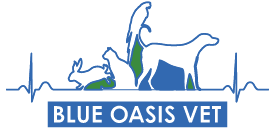Physiotherapy
Animals, like people, respond to Physiotherapy. From the management of joints or spinal problems to rehabilitation after fractures or any injury, animal physiotherapy is now considered significant support of medical and surgical treatment. Our aim is to improve, restore or maintain the patient’s functional mobility.
Can your pet benefit from physiotherapy?
If your pet is diagnosed with any of the following conditions, physiotherapy could be beneficial:
Osteoarthritis
■ Intervertebral Disc Disease: hernia, lumbo sacral stenosis, back pain
■ Rehabilitation after surgery: fractures, cruciate ligament, femoral head and neck excision
■ Joint problems: hip/elbow dysplasia, cruciate disease, patella luxatio
■ Back, neck and pelvic pain- i lumbosacral stenosis
■ Neurological conditions
■ Pain or discomfort
■ Difficulty with function eg. jumping, stairs
■ Reluctance to play or exercise
■ Unusual behaviour
■ Lameness
■ Muscle, tendon and ligament strain/tear
Our Procedures:
First we check your animal’s medical history and the condition diagnosed by your vet. We will be working closely with our vets to create a suitable rehabilitation plan, that will be tailored to your animal’s needs. After the physiotherapy treatment in the clinic, we will also discuss the exercises and lifestyle changes that your pet may require at home in order to improve. You will be given a customized exercise plan depending on your pets condition and needs.
Our Equipment:
THERAPEUTIC LASER: (light amplification by stimulated emission of radiation) facilitates healing, decreases pain and inflammation. Benefits for example:
- Stimulates wound healing
- Eases pain and inflammation caused by Arthritis
- Makes soft tissue injuries heal faster
- Two to ten sessions will be recommended, depending on the pathologic stage of current disease.
ELECTRICAL STIMULATION: this therapy involves applying an electric current to the pet’s muscles in order to stimulate the muscles. Benefits for example:
- Pain management
- Treatment of muscle contraction
- Control of edema
PASSIVE EXERCISES (PROM) for joints: The goal of these exercises is to slowly and carefully guide the affected joint through the available pain-free range of motion, eventually restoring it as much as possible. Benefits for example:
- Orthopedic rehabilitation for both postoperative recovery and chronic conditions (such as femoral head and neck excision and arthritis, respectively) and,
- Prevention of joint contracture
- Maintenance of mobility
- Improvement of muscles strength.
BALANCE AND PROPRIOCEPTION: is the ability to move or to remain in a position without losing control.
These exercises require to the animal to respond to rapid changes in a supporting surface. To improve proprioception, the pet will be walked over uneven surfaces like Wobble boards
WEIGHT-SHIFTING EXERCISE: the goal of these exercises is to encourage the patient to place more and more weight on the affected limb or limbs.
STRETCHING: speeds up recovery from muscular injuries, bone surgeries as well as reduces muscle soreness and helps to restore flexibility and range of movement.
THERMOTHERAPY: heats the muscles and increases the local circulation and tissue extensibility.
CRYOTHERAPY: is indicated in acute cases of inflammation, trauma, and pain, such as post injury or surgery. The application of cold pack decreases blood flow to the region of application, reducing inflammation, pain and metabolic rate. As well as muscle spasms and bleeding in the area.
If you’ve noticed an unusual change in your pet, or you’re already aware of an injury, there’s no better time to get an expert opinion on the situation.
If you think your pet is in need of physiotherapy or any of the treatments mentioned above: please get in contact with our physiotherapist.
FAQ’s
Frequently Asked Questions
Physiotherapy can help an animal in a variety of situations.
Orthopaedic conditions referred can include:
■ Spinal conditions
■ Joint problems including degenerative joint disease and arthritis
■ Soft tissue injuries
■ Sports injuries
■ Pre- and post-op cases
■ Behavioural/temperament problems related to any of the above
■ Neurological conditions referred can include:
■ Spinal cord trauma or disease
■ Nerve trauma
No matter what, it’s important that your pet doesn’t chew or bite on his or her stitches. Sometimes your pet will require a pet cone which will prevent your pet from biting or licking the site of the stitches.
If your vet is in agreement, absolutely, yes.
Most certainly. All animals can receive treatment, although companion animals such as dogs and cats are most commonly treated.



